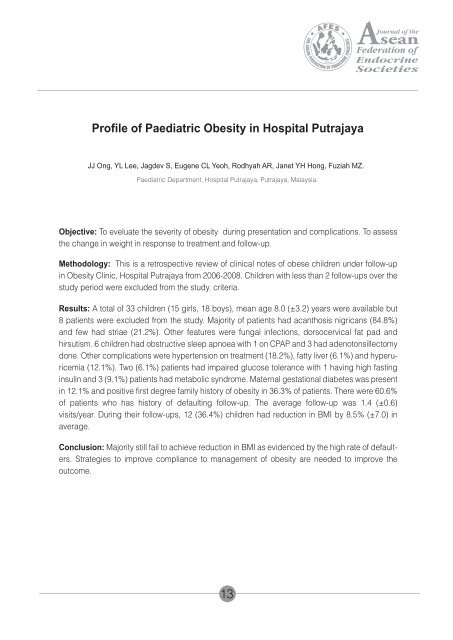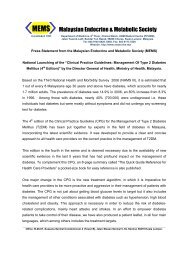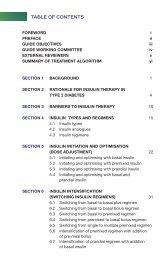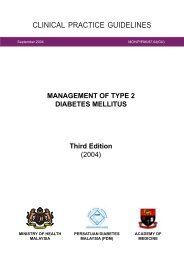JAFES-Booklet (English - pdf - 1103 Kb) - MEMS
JAFES-Booklet (English - pdf - 1103 Kb) - MEMS
JAFES-Booklet (English - pdf - 1103 Kb) - MEMS
You also want an ePaper? Increase the reach of your titles
YUMPU automatically turns print PDFs into web optimized ePapers that Google loves.
Profile of Paediatric Obesity in Hospital Putrajaya<br />
JJ Ong, YL Lee, Jagdev S, Eugene CL Yeoh, Rodhyah AR, Janet YH Hong, Fuziah MZ.<br />
Paediatric Department, Hospital Putrajaya, Putrajaya, Malaysia.<br />
Objective: To eveluate the severity of obesity during presentation and complications. To assess<br />
the change in weight in response to treatment and follow-up.<br />
Methodology: This is a retrospective review of clinical notes of obese children under follow-up<br />
in Obesity Clinic, Hospital Putrajaya from 2006-2008. Children with less than 2 follow-ups over the<br />
study period were excluded from the study. criteria.<br />
Results: A total of 33 children (15 girls, 18 boys), mean age 8.0 (±3.2) years were available but<br />
8 patients were excluded from the study. Majority of patients had acanthosis nigricans (84.8%)<br />
and few had striae (21.2%). Other features were fungal infections, dorsocervical fat pad and<br />
hirsutism. 6 children had obstructive sleep apnoea with 1 on CPAP and 3 had adenotonsillectomy<br />
done. Other complications were hypertension on treatment (18.2%), fatty liver (6.1%) and hyperuricemia<br />
(12.1%). Two (6.1%) patients had impaired glucose tolerance with 1 having high fasting<br />
insulin and 3 (9.1%) patients had metabolic syndrome. Maternal gestational diabetes was present<br />
in 12.1% and positive first degree family history of obesity in 36.3% of patients. There were 60.6%<br />
of patients who has history of defaulting follow-up. The average follow-up was 1.4 (±0.6)<br />
visits/year. During their follow-ups, 12 (36.4%) children had reduction in BMI by 8.5% (±7.0) in<br />
average.<br />
Conclusion: Majority still fail to achieve reduction in BMI as evidenced by the high rate of defaulters.<br />
Strategies to improve compliance to management of obesity are needed to improve the<br />
outcome.<br />
13













